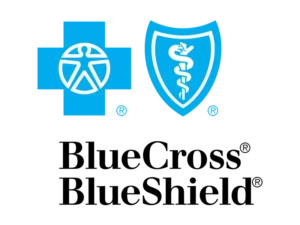Teen trauma and abuse:
Understanding the Effects of Trauma on Teenagers

Teen trauma and abuse affect millions of teenagers each year. In fact, the Centers for Disease Control reported that around one in seven children and teens in the U.S. have experienced abuse in the last year.1
Trauma is a natural response to abuse. Teenagers experiencing abuse may not fully understand what is happening to them – or why – so they may develop ways of coping that can extend into adulthood if not managed.
Whether abuse is physical, emotional, domestic, or sexual, it can affect a teenager’s life in wide-reaching ways. If you or someone you know is experiencing abuse, know that trauma is never the victim’s fault. There are support and healing options available to help you manage the physical, mental, and emotional effects of trauma and abuse.
This page can help by discussing:
- What teen trauma and abuse is
- The different types of abuse in teenagers
- Signs of trauma in teens
- The effects of trauma on teenagers
- Help options for teens with trauma
- Child and teen trauma therapy options
- When to seek help for teen trauma and abuse

What Is Trauma and Abuse?
The American Psychological Association (APA) defines trauma as “an emotional response to a terrible event.”2 Situations that can cause trauma responses can be one-off incidents or they can be a series of events. While there’s no exact definition of events that can cause trauma, common ones include:
Physical or emotional abuse
- Experiencing or witnessing violence
- Neglect
- Accidents
- Crime
- Loss of a loved one
Abuse in teens is defined as any action which can cause emotional, sexual, or physical harm to a teenager.3 While a teen can be the victim of abuse from a range of sources, such as parents, teachers, romantic partners, and mentors, abuse typically comes from someone they know well – and trust.
It’s normal to feel shock and denial after a traumatic event, but longer-term reactions can affect a teen’s life in wide-reaching ways. They may battle with shifting, unpredictable emotions, distrust in relationships, and even experience physical complaints like headaches and stomach upsets.
To understand how trauma can affect teens, it may help to understand the types of abuse in teenagers.
Types of Abuse in Teenagers
Teen physical abuse is when someone purposefully hurts a teenager. Physical abuse includes actions such as slapping, punching, hitting with objects, burning, biting, kicking, and so on. Like many forms of abuse, physical abuse is most often seen in relationships of trust. This means that a teen may experience physical abuse from someone they care about.4
Emotional abuse is a pattern of non-physical behaviors that are used to control, frighten, and isolate someone. It can include spoken or non-spoken communication, as well as electronic contact (online and in text). Emotional abuse can include actions such as controlling behaviors, attempting to isolate, violating boundaries, gaslighting, and using words to humiliate or degrade someone.5
Sexual abuse in teens is when an adult engages in sexual activity with a minor – someone under the age of consent cannot assent to any form of sexual activity. Sexual abuse in teens includes (but is not limited to) actions such as any form of sex (including intercourse), exposing oneself to a minor, masturbation, sexual communication such as phone calls or texts, and owning or sharing sexual content of minors.7
All of these forms of abuse can have serious consequences for a teen’s emotional, physical, behavioral, and social development. Overall, they affect how a teen views the world; they see their environment and the people in it as unsafe – and themselves as powerless to control what happens to them. For a teen’s safety, well-being, and happiness, it’s important to deal with abuse as soon as possible.
If you suspect that someone you know may be being abused, the following signs of trauma in teens may help.
Signs of Trauma in Teens
The signs of trauma in teens can vary from person to person – they can be affected by their type of trauma, previous experiences, personality traits, and support system. It’s also important to note that not all teens will show outward signs of trauma and abuse. The effects of abuse can hide deep in the mind – affecting a teen in more internal ways.
However, if you’re concerned that someone you know has trauma from abuse, the following behavioral, emotional, and physical signs can help you understand whether support is needed.
The Behavioral Signs of Trauma in Teens8-10
- Aggression: Not understanding how to cope with what they’ve experienced, a teen may resort to angry and aggressive behaviors. Such ways of acting may also have been normalized to them.
- Acting either defiant or overly compliant: They may oppose instructions from authority figures, or else go above and beyond to follow requests out of fear.
- Constant tiredness: A teen who has experienced abuse may struggle to sleep, leading to fatigue and exhaustion.
- Risky behaviors: They may not be able to cope with negative emotions, so engage in actions that could cause them emotional or physical harm.
- Repeating trauma: Abuse may cause a teen to discuss traumatic events repeatedly as a way to process what they’ve experienced. They might also repeat abusive relationship patterns in future relationships.
- Withdrawal and isolation: A teen may attempt to avoid any situation or group in which they might be reminded of their trauma.
The Emotional Signs of Trauma in Teens9-11
- Difficulties controlling emotions: Trauma can cause a teen to experience mood swings and irritability. They may suddenly become unexplainably sad, angry, or irritable – and struggle to calm down afterward.
- Lack of understanding around what they’re feeling: A teen who has been abused may struggle to put words to how they feel. This means they may not be able to express what they’ve experienced and need.
- Problems with self-esteem: They may come across as under-confident, doubt themselves and their opinions, and sacrifice their wants and needs for those of others. They might also feel like they can’t achieve goals, so don’t try.
- Perfectionism: A teen who is being abused may fear making mistakes in case they’re punished for doing so.
- Learning difficulties: A teen might struggle to concentrate if all their mental resources are going toward staying safe from harm. This means they might find learning new information and skills difficult, affecting their performance at school.
The Physical Signs of Trauma in Teens12,13
- Injuries to the body: One of the most obvious signs of trauma from abuse is signs of injury to the body. These may include new injuries such as bruises, burns, or scratches. However, there could also be evidence of old wounds, such as injuries in different stages of healing.
- Regular illnesses: A teen can store trauma in the body, meaning that they may get a lot of physical ailments without a clear cause. For instance, they may complain of regular stomach pains, headaches, or muscle tension. A teen who has experienced trauma may also show heightened sensitivity to certain sounds, lights, tastes, and textures.
- Shying away from physical contact: Trauma in teens may cause discomfort with physical touch. For instance, they might pull away from hugs or shrug off a hand on their shoulder.
The signs of trauma in teens are extensive – they can be a lot to take in at once. However, the one takeaway from these signs is that trauma and abuse can have wide-ranging effects on a teen’s development and happiness.
Effects of Trauma on Teenagers
The type of abuse a teen experiences, who inflicted it, for how long, and their personality and age will all affect a teen’s reaction to abuse. However, the following are potential long-term effects of trauma on teenagers.
How Trauma Affects Teen Behavior:8,14,15
Trauma and abuse can affect how a teen acts in the following ways:
Isolation or withdrawal from loved ones:
As abuse often comes from someone a teenager is close to and trusts, they may start to fear and distrust others in general. This means they may pull away from family and friends, removing themselves from those who could offer support.
- Increased conflict: People may put mood swings, aggression, and outbursts of emotion down to teenage “angst,” but these are often the only ways a teen can cope with intense feelings. As a result, a teen with trauma may feel misunderstood, leading to increased amounts of conflict between family and friends.
- Problem behaviors: Trauma and abuse can increase the risk that teenagers will show problem behaviors, such as bullying, risk-taking, and aggression toward others. Aggressive behaviors may be caused by difficulties understanding and expressing emotions, but could also be because aggression and violence have been normalized for them.
- Difficulties enjoying life: Trauma and abuse can cause structural changes to a teenager’s brain, making it harder for them to feel pleasure from activities they previously enjoyed.
- Anger in school: A teen with trauma and abuse may find it difficult to cope with the social and academic demands of school. This difficulty may lead to disruptive behaviors, aggression, and a lack of focus.
How Trauma Affects Teen Emotions:9,10,16
Trauma and abuse can lead to the following long-term emotional effects:
Mental health issues:
A teen with trauma resulting from abuse may be at risk of developing mental health conditions such as post-traumatic stress disorder (PTSD), anxiety, depression, eating disorders, and self-harm behaviors. This highlights the need for immediate support.- Developing unhealthy coping skills: The negative emotions caused by trauma and abuse can be too overwhelming for teenagers to cope with, so they might start to rely on unhealthy ways to release tension. However, not learning effective ways to manage emotions can affect their ability to cope with stressful situations as they continue into adulthood.
- Social anxiety: As abuse can come from someone close to a teen, they may start to distrust others in general. Combined with how trauma and abuse can lead to self-blame and low self-esteem, a teen may develop social anxiety and avoid group situations. Social anxiety can limit important bonding experiences for a teen and could impact future relationships if not managed.
Aside from these long-term behavioral and emotional effects of trauma and abuse, a teenager is also at risk of serious physical complications – regardless of the type of abuse inflicted.17 If you’re concerned that a teenager is experiencing trauma and abuse, help and support are available.
Help for Teens With Trauma
If you, or someone you care about, are experiencing trauma and abuse, you are not alone.
Talking to a trusted adult can help you feel safe, understood, and supported. Plus, putting how you feel into words can make things seem more manageable – you are in control of what you say. Telling someone you trust about what you’re going through means they can also be there for you in the future.
There’s also a wide variety of resources for youth experiencing trauma, such as the following:
- Childhelp Hotline provides support for teens experiencing any form of trauma and abuse
- Teenline offers a range of support and resources for teens experiencing a wide range of issues, including abuse.
- The Administration for Children and Families offers a resource toolkit for teens who have experienced any form of sexual abuse.
- The National Domestic Violence Hotline provides 24/7 support for anyone going through domestic abuse.
- National Safe Place lets teens know safe places they can go to in their area if they feel unsafe or under threat.
If you ever feel like your safety or well-being is under threat, it can help to prepare a “safety plan” in advance. During times of threat or stress, a safety plan can remind you how to safely manage the situation, remove yourself from it, and what steps to take after you leave.

Child and Teen Trauma Therapy
Coping with trauma and abuse can be difficult to do by yourself. Abuse can cause long-lasting psychological, behavioral, and physical effects on teens, making them feel powerless in what they believe to be a dangerous world.
However, the good news is that regardless of the type of trauma and abuse a teen has, there are effective trauma-focused therapy for teenagers. These include:
Trauma-focused CBT can help teens heal from trauma and abuse as it focuses on distressing thoughts, helps identify and process emotions, targets self-blame, and develops coping skills.
EMDR therapy for teen trauma and abuse can help process trauma in a safe, supportive environment. It changes the way trauma is stored in the brain, allowing the teen to heal and build positive self-beliefs and coping skills.
Dialectical Behavior Therapy (DBT)
DBT was adapted from CBT for people who struggle with strong or difficult emotions. It can help manage teen trauma and abuse by teaching practical ways of managing emotions and stress.
TMS’ non-invasive approach can reduce the symptoms of trauma and abuse by rebalancing the brain, promoting a more stable mood and better well-being.
Other teen trauma recovery programs include residential treatment for trauma, outpatient treatment, and intensive outpatient options. Also, group therapy can be an excellent resource for trauma as it provides a safe space for teens to express how they feel and realize that they’re not alone in their experiences.
When to Seek Help for Teen Trauma and Abuse
Every teen deserves to feel safe and protected. If you are experiencing abuse, or suspect that someone you know is, the time to seek help is now. There are people who can help. Talking to someone you trust, including caregivers, teachers, mentors, or medical and mental health professionals, can ensure you get the support you need.
You are not alone. Mission Prep is here to support any teen who has experienced abuse. Our team of trained professionals offers individualized care based on a teen’s specific needs. We aim to give teens who have experienced trauma back their voices, making sure they have an active role in their treatment and well-being. Healing from trauma is not only possible – it is achievable.
Reaching out is the first step towards healing. Contact us today for support and guidance.
References
- Centers for Disease Control and Prevention. (n.d.). About child abuse and neglect. Retrieved February 3, 2025, from https://www.cdc.gov/child-abuse-neglect/about/
- American Psychological Association. (n.d.). Trauma. Retrieved February 3, 2025, from https://www.apa.org/topics/trauma
- Child Welfare Information Gateway. (n.d.). Child abuse and neglect. U.S. Department of Health & Human Services, Children’s Bureau. Retrieved from https://www.childwelfare.gov/topics/safety-and-risk/child-abuse-and-neglect/?top=86
- American Psychological Association. (n.d.). Physical abuse and violence. APA. https://www.apa.org/topics/physical-abuse-violence
- National Domestic Violence Hotline. (n.d.). What is emotional abuse? The Hotline. Retrieved from https://www.thehotline.org/resources/what-is-emotional-abuse/
- Domestic Violence Services Network (DVSN). (2024, May). Concerning children: Childhood domestic violence (2 of 2). Retrieved 3rd Feb 2025, from https://www.dvsn.org/may-2024-concerning-children-childhood-domestic-violence-2-of-2/
- Rape, Abuse & Incest National Network. (n.d.). Child sexual abuse. Retrieved February 3, 2025, from https://rainn.org/articles/child-sexual-abuse
- Kuzhiyengal Mambra, A. J., & Kotian, S. (2024). The impact of childhood trauma on aggressive behaviour in adolescence. JuniKhyat, 14(10), 515–527.
- American Psychological Association. (2020). Emotional and behavioral effects of trauma in adolescents. Psychological Assessment, 32(8), 719-730. https://doi.org/10.1037/pla0000215
10. National Child Traumatic Stress Network. (n.d.). Effects of trauma on teens. Retrieved from https://www.nctsn.org/what-is-child-trauma/trauma-types/complex-trauma/effects.
11. Rai, T., Mainali, P., Raza, A., Rashid, J., & Rutkofsky, I. (2019). Exploring the Link Between Emotional Child Abuse and Anorexia Nervosa: A Psychopathological Correlation. Cureus, 11(8), e5318. https://doi.org/10.7759/cureus.5318
12. van der Kolk, B. A. (1988). The biological response to psychic trauma. In Post-Traumatic Therapy and Victims of Violence (1st ed., pp. 14). Routledge. https://doi.org/10.4324/9780203776414
13. Mayo Clinic. (n.d.). Child abuse – Symptoms and causes. Mayo Clinic. https://www.mayoclinic.org/diseases-conditions/child-abuse/symptoms-causes/syc-20370864
14. Armsworth, M. W., & Holaday, M. (1993). The effects of psychological trauma on children and adolescents. Journal of Counseling & Development, 72(1), 49–56. https://doi.org/10.1002/j.1556-6676.1993.tb02276.x
15. Provide Education. (n.d.). Understanding aggression in the classroom. Retrieved February 3, 2025, from https://www.provide-education.co.uk/understanding-aggression-in-the-classroom/
16. American Psychological Association. (n.d.). Posttraumatic stress disorder (PTSD). Retrieved January 31, 2025, from https://www.apa.org/topics/ptsd
17. van der Kolk, B. A. (1988). The biological response to psychic trauma. In Post-Traumatic Therapy and Victims of Violence (1st ed., pp. 14). Routledge. https://doi.org/10.4324/9780203776414

















